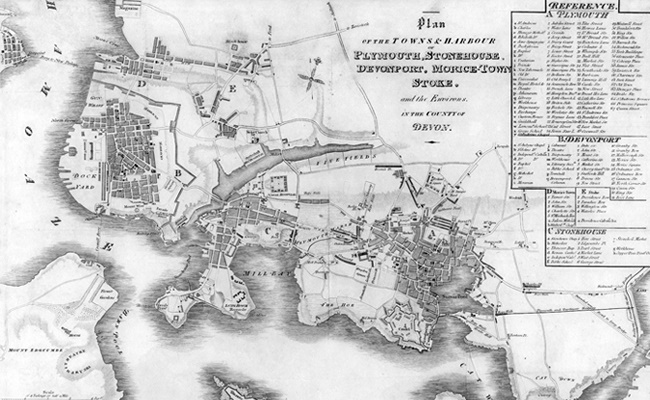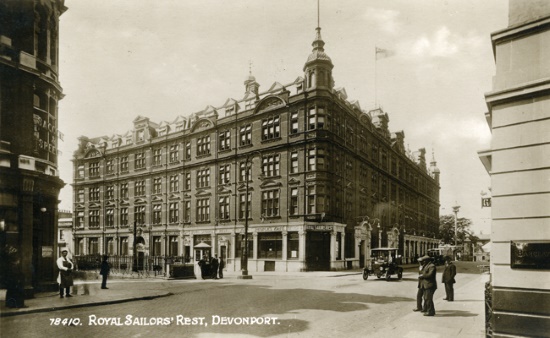Plymouth's History
Plymouth's roots can be traced back over a thousand years to Saxon times, with its unique location shaping a history steeped in maritime significance. Nestled on the southern coast of England, Plymouth has grown from a modest settlement into a port city known for its pivotal role in exploration, naval power, and global trade.
Sutton Harbour: The Birthplace of Plymouth
Originally referred to as Sudtone (South Farm) in the Domesday Book of 1086, the area that would become Plymouth began as farmland on a small peninsula at the mouth of the River Plym. It later evolved into Sutton Harbour, becoming the center of medieval Plymouth. Over time, the town's strategic coastal position made it a hub for both maritime exploration and military operations.
Sir Francis Drake
One of Plymouth’s most renowned historical figures, Sir Francis Drake, set sail from Plymouth in 1572, becoming the first Englishman to sail into the Pacific. By 1577, he embarked on a global circumnavigation. His legacy is further immortalized in 1588 when he helped fight against the Spanish Armada, a legendary moment marked by the tale of Drake calmly playing bowls on Plymouth Hoe as enemy ships approached.
The Mayflower Pilgrims: Plymouth's connection to America
In 1620, Plymouth became the launching point for one of the most famous voyages in history. The Pilgrims, seeking religious freedom, departed aboard the Mayflower and eventually established a new Plymouth community in what is now Massachusetts, USA. This pivotal moment cemented Plymouth's place in transatlantic history.
James Cook and Global Exploration
Plymouth continued to serve as a starting point for expeditions, with James Cook departing from the city on his three voyages to the Pacific. Cook’s first voyage in 1768 saw him become the first European to set foot on the Hawaiian Islands. His explorations significantly expanded European knowledge of the southern hemisphere.
Charles Darwin and the Theory of Evolution
In 1831, the HMS Beagle set sail from Plymouth, carrying Charles Darwin on a journey that would change scientific understanding forever. His observations in the Galapagos Islands laid the foundation for his groundbreaking work on natural selection and the theory of evolution.
The Royal Navy and Plymouth's Military Importance
Plymouth's importance to British naval power dates back to 1670, with the construction of the Royal Citadel on Plymouth Hoe. By 1690, the first Royal Dockyard was established along the River Tamar. Over the next century, additional docks were built, transforming Plymouth into a key naval base. The city's naval expansion played a crucial role during the Napoleonic Wars, with a mile-long breakwater being laid in 1812 to protect the fleet.
Unification of the Three Towns: Plymouth, Devonport, and Stonehouse
In the 19th century, the towns of Plymouth, Devonport, and Stonehouse experienced rapid growth. By 1914, the need for a more efficient government during wartime prompted the unification of these three towns under the Borough of Plymouth, despite opposition from Devonport Corporation. This move was supported by the public due to the urgency of streamlined decision-making.
Victorian and Edwardian maps indicate that while the Three Towns had effectively merged, they still retained their distinct identities and local governance.
In 1928, Plymouth was granted city status, further solidifying its importance in the region. The city underwent significant changes in its boundaries in 1938 and 1951, incorporating the rapidly growing Plympton and Plymstock areas, which had developed steadily after World War I.
Plymouth suffered extensive damage during the Second World War, becoming one of the most heavily bombed cities in England. The Blitz devastated large parts of the city center, Devonport, and Stonehouse. By 1943-44, a revolutionary plan was in place to rebuild and modernize the city. The reconstruction efforts in the 1950s transformed Plymouth's commercial heart, making it the first city in England to feature pedestrian-only shopping avenues.

While around 5,000 council houses and flats were built between the wars, including large estates in the Swilly and North Prospect areas, there was an increasing trend of residents moving into new homes outside the city.
.jpg)
In the Second World War Plymouth was one of the most badly bombed cities in England. The ‘Blitz’ caused widespread damage; flattening large parts of the city centre, central Devonport and areas of Stonehouse. By 1943-4, before the War had ended, there was a revolutionary plan in place to create a new modern City.
.jpg)
Plymouth: Port & Place
The port of Plymouth has a rich maritime history based on fishing, trade and a long and continuing association with the Royal Navy. The sea has touched the lives of everyone who has lived-in or visited the port of Plymouth. The sea continues to shape the modern City.
.jpg)
Plymouth is located in the south west of Britain on the Western Approaches to the English Channel. Plymouth Sound is a natural harbour at the meeting point of the Rivers Plym and Tamar, providing two important, navigable routes inland to West Devon and East Cornwall.
Originally a small town, Plymouth prospered as a centre of fishing and trade. Local, coastal and continental trade grew steadily, especially cross-Channel trade with France and Spain. It became Britain’s south-western gateway to the world’s oceans. Fortifications were built and the port became established as a military and naval base, vital to the nation’s defence.
.jpg)
Past and present, Plymouth is about the sea - sailors in peace and war, voyages of adventurers and exploration; passenger arrivals and departures; ship building and ship repair; merchants and maritime traders; cargoes, docks and warehouses; the sea as both a place of work and as a place of leisure.



 to add an item to your Itinerary basket.
to add an item to your Itinerary basket.








Tweet, Follow & Share